Top image: Five Italian partisans examine a map, location in Italy unknown, probably late 1944 or early 1945. US Army Signal Corps photo, in memory of William F. Caddell, Sr., from the Collection of The National WWII Museum, 2007.048.218.
1945
January 1 Almost complete calm over the entire front in Italy. General Sir Richard McCreery’s Eighth Army is dug in along the Senio and General Lucien K. Truscott’s Fifth Army is ten miles from Bologna. General Heinrich von Vietinghoff uses this time to regroup and replenish the German Tenth and Fourteenth Armies.
January 15 Field Marshal Albert Kesselring resumes command of all German forces in Italy.
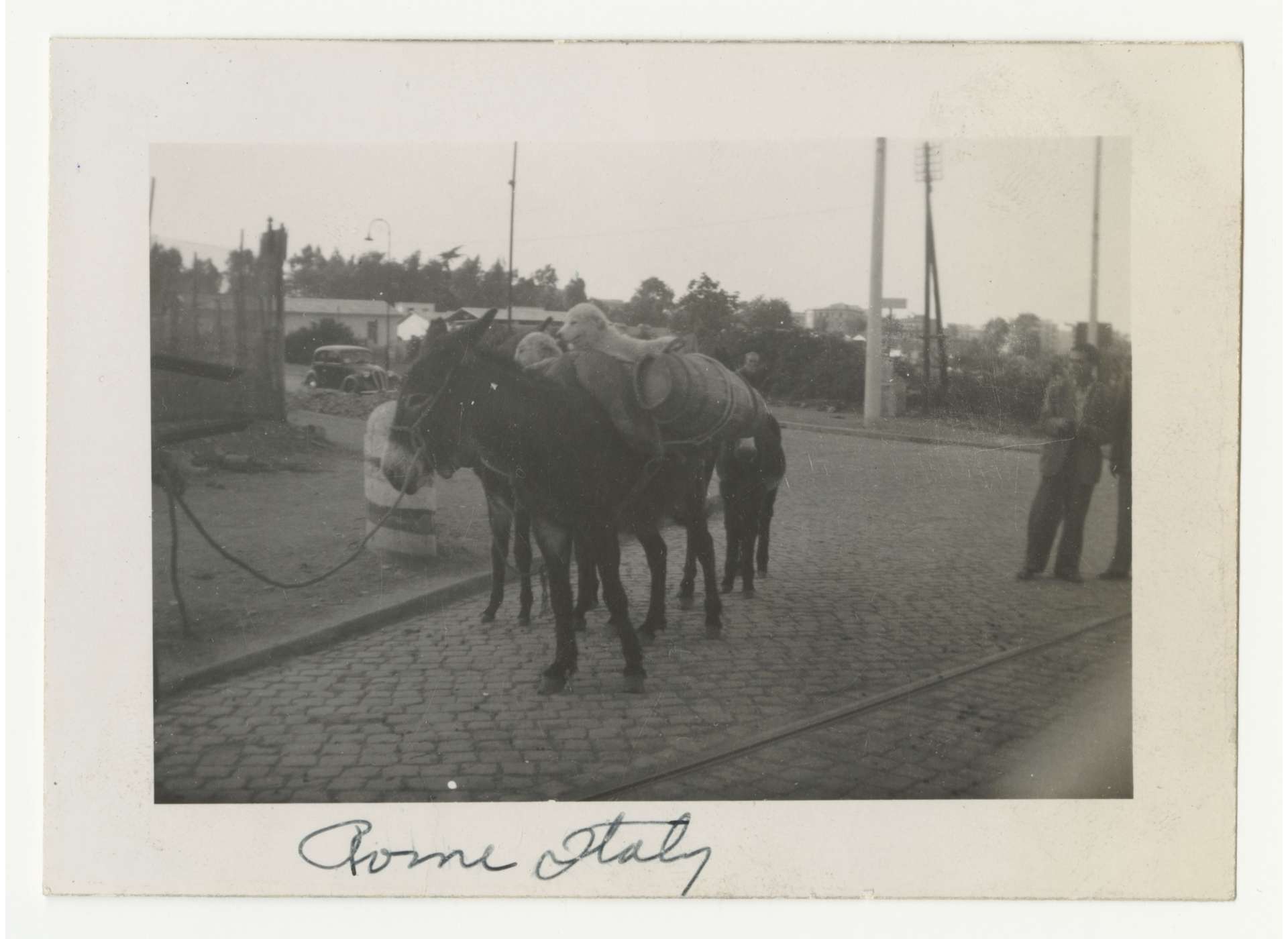
Dog riding a pack mule in Rome, 1944-45. Pack mules were extremely important for the Allied campaign in Italy. Gift of Vincent Yannetti, from the Collection of The National WWII Museum, 2008.321.149.
February 8 92nd Infantry Division conducts limited operations along the western coast of Italy.
February 20 US IV Corps, under the command of Major General Willis D. Crittenberger (made up of 1st Armored Division, 10th Mountain Division, 88th Infantry Division, 92nd Infantry Division, and South African 6th Armored Division), carries out limited attacks in order to consolidate positions west of Highway 64. This offensive wraps up five days later.
March 2 Italian Cremona combat group, coordinating with partisans from the 28th Garibaldi Brigade, initiates an offensive against Comacchio.
March 3 US IV Corps opens the second phase of a limited offensive in the hills northeast of Monte Torraccia and Monte Castello. This offensive concludes two days later. Members of the Jewish Brigade from Palestine, 5,000 strong, led by Brigadier Ernest Benjamin, and under overall British command, see their first action in Italy.
March 18 Battle of the Ligurian Sea, the last surface naval confrontation for the German Navy in World War II, takes place between 3 German ships (one destroyer and two torpedo boats) and two destroyers of the Royal Navy. Two of the three German ships are sunk.
March 23 General Heinrich von Vietinghoff replaces Field-Marshal Kesselring as Commander-in-Chief of all German forces in Italy (Army Group C). The 442nd Infantry Regiment, after several months of combat in France, returns to Italy via Marseille and is attached to the 92nd Infantry Division.
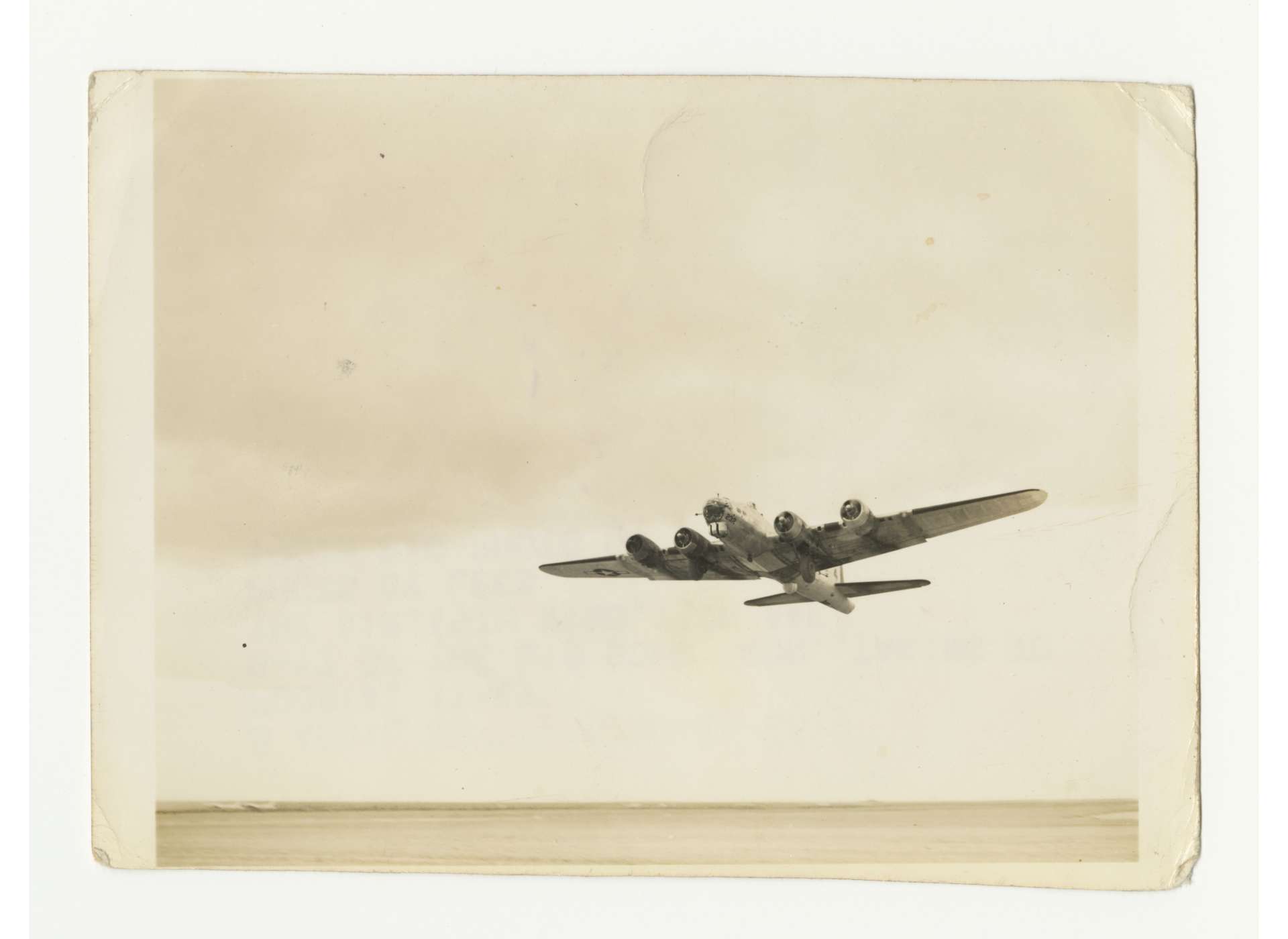
B-17 Flying Fortress of the 419 Bombardment Squadron, 301st Bombardment Group, Fifteenth Air Force, takes off from an airfield near Foggia, April 8, 1945. US Army Signal Corps photo, gift in memory of William F. Caddell, Sr., from the Collection of The National WWII Museum, 2007.048.108.
April 9 General McCreery’s British Eighth Army begins a massive offensive. They are able to establish bridgeheads over the Senio River in the Lugo sector and close to San Severo-Felisio; Germans are taken by surprise.
April 10 The US 92nd Infantry Division enters Massa.
April 14 After multiple postponements due to bad weather, the US Fifth Army launches its final offensive of the war. Operations by US Major General Geoffrey Keyes’s II Corps toward Bologna are backed by the Italian Legnano Combat Group.
April 18 The US 10th Mountain Division reaches the Sulmonte-San Chierlo region, capturing around 3,000 German prisoners.
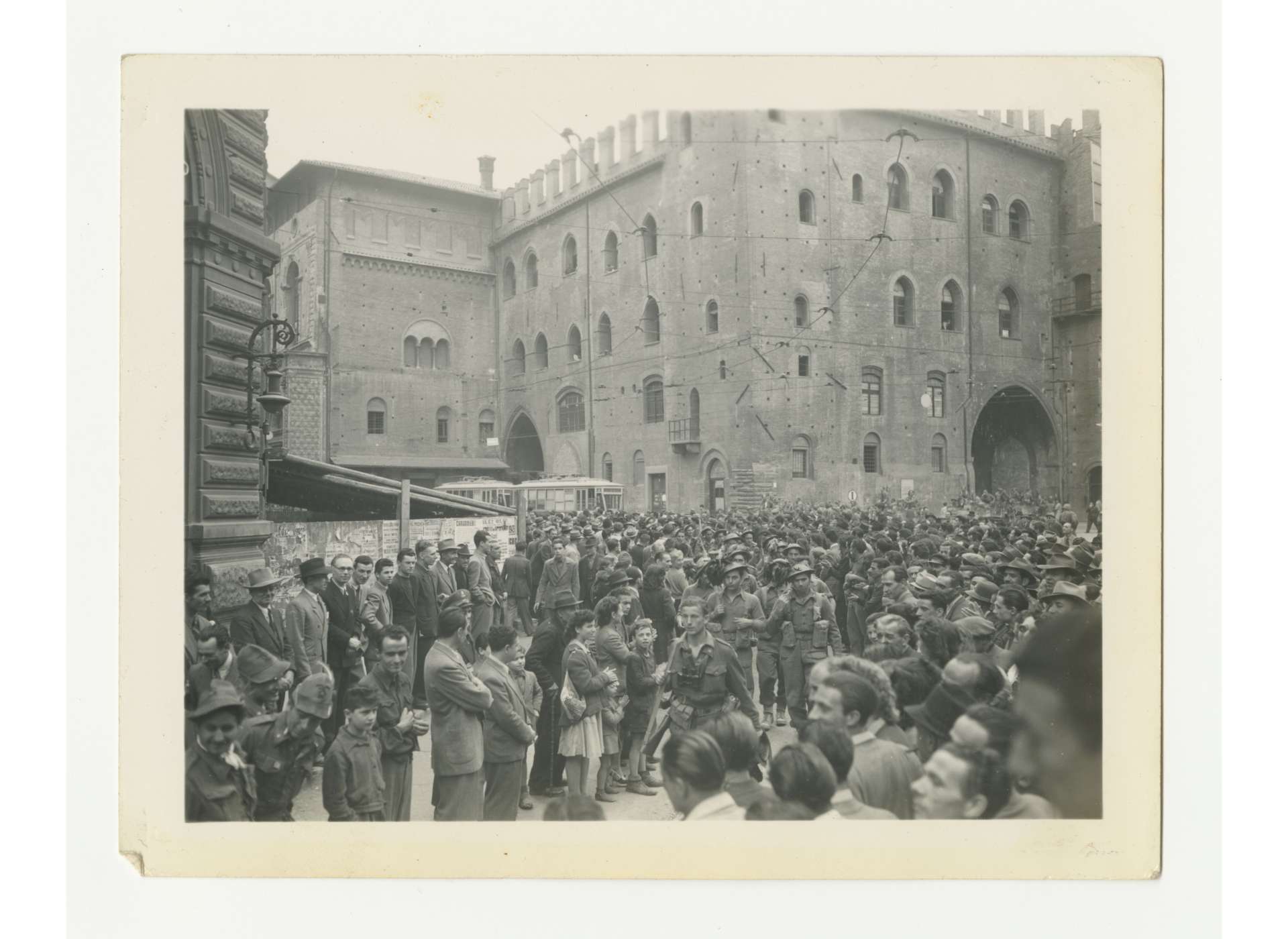
Italian troops serving with US Fifth Army enter liberated Bologna, April 21, 1945. US Army Signal Corps photo, in memory of William F. Caddell, Jr., from the Collection of The National WWII Museum, 2007.048.096.
April 21 Bologna is liberated by Polish and American troops, as well as by Italian combat forces and partisans.
April 22 Men of the US 85th Infantry Division’s 310th Engineer Battalion (US II Corps) save the Panaro River bridge at Camposanto from destruction, secure it, and repel German attempts to retake the bridge.
April 23 Allied push to the Po River nets some 100,000 Axis prisoners.
April 24 All of the US Fifth Army reaches the Po River by this date. Over the next two days Fifth Army forces push out from Po bridgeheads and split Axis forces in northern Italy in two.
April 25 Volunteer Corps for Freedom calls for a general uprising in northern Italy. Members of the CLN meet with Mussolini in Milan and demand his unconditional surrender. The 88th Infantry Division liberates Verona.
April 27 The 92nd Infantry Division reaches Genoa.
April 28 Mussolini and mistress Clara Petacci are arrested near Lake Como and executed. Their bodies, along with those of several functionaries of the Salò Republic, are hung upside down at the Piazzale Loreto in Milan. Venice falls to the Allies. The CLNAI takes provisional power in northern Italy.
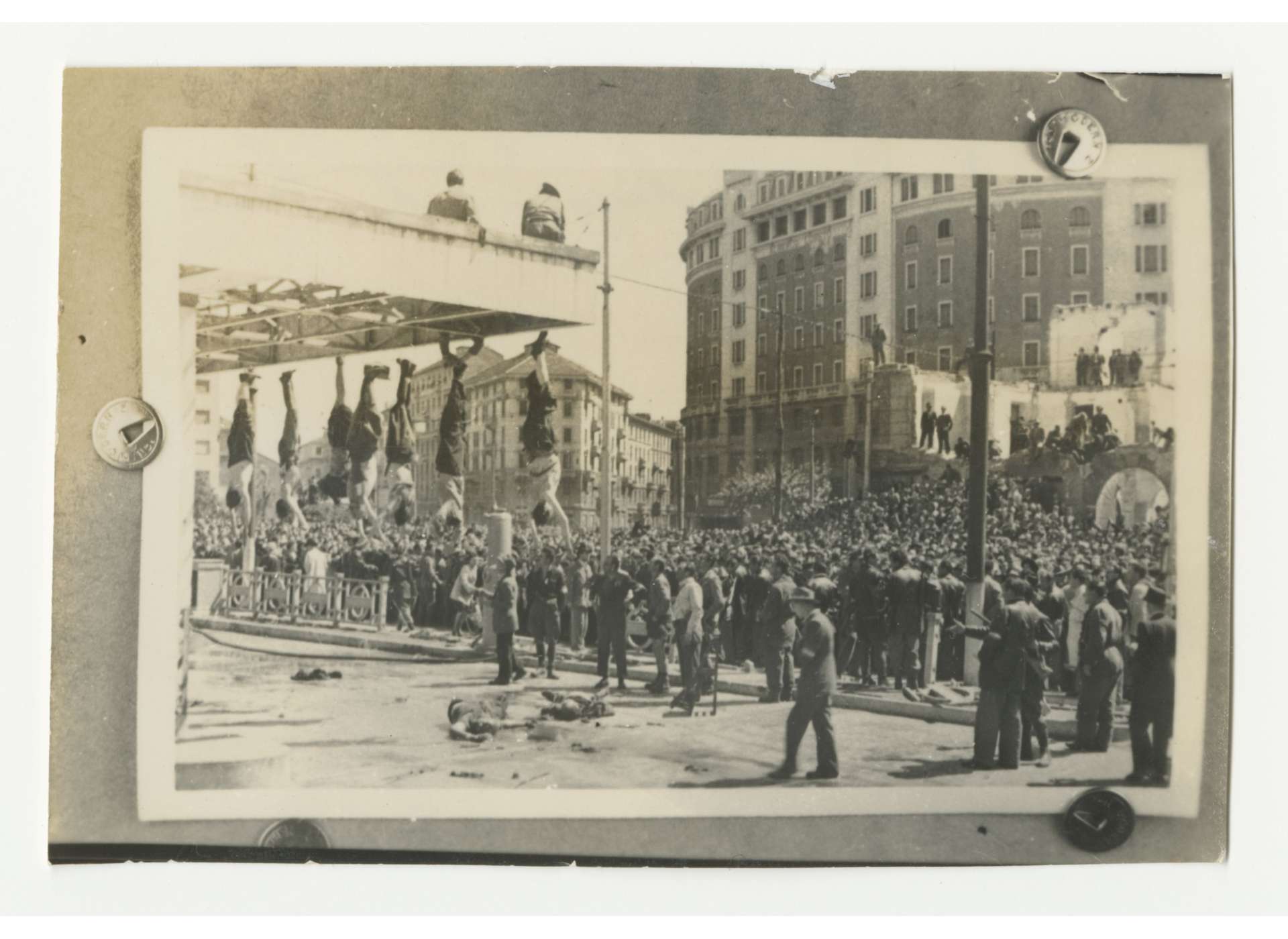
Corpses of Benito Mussolini and his compatriots exhibited at the Piazzale Loreto in Milan, April 29, 1945. Gift of Dorothy Poitevent, from the Collection of The National WWII Museum, 2007.243.189.
April 29 At Caserta, representatives of General Vietinghoff, commander of German Army Group C, agrees to the unconditional surrender of all German forces in Italy. British, US, and Soviet officers are present. The US 1st Armored Division reaches Lake Como.
April 30 Adolf Hitler commits suicide in his bunker in Berlin.
May 2 Surrender signed by General Vietinghoff goes into effect. 2nd New Zealand Division takes Trieste.
May 8 Victory in Europe Day.
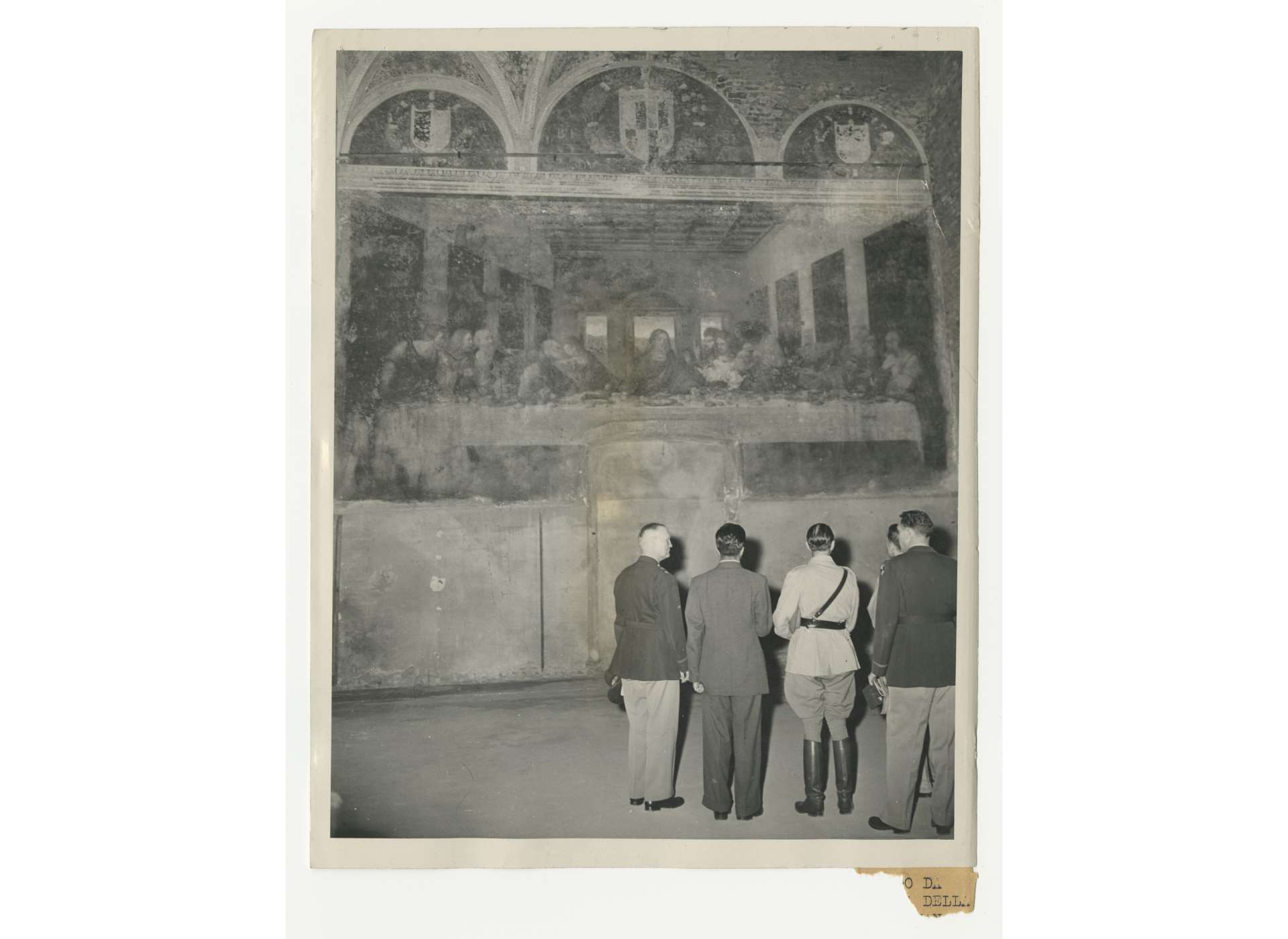
British Field Marshal Harold Wilson and US Major General Willis D. Crittenberger, viewing Leonardo da Vinci’s The Last Supper, Milan, June 25, 1945. Gift of Dylan Utley, from the Collection of The National WWII Museum, 2012.019.010.
CASUALTIES FOR THE ALLIED CAMPAIGN IN ITALY:
312,000 total Allied casualties (excluding Italian partisans)
19,475 American servicemembers killed
12,411 British, and Commonwealth, Free French and French colonial, Polish, and Brazilian troops, Italian Service Unit members, and Jewish Brigade volunteers from Palestine (who served under British command) killed
54,700 Italian partisans killed (44,720 Italian partisans in combat, 9,980 in Axis reprisals)
45,000 Italian servicemembers taken prisoner by the Germans in 1943 (out of a total of 600,000), and renamed “internees,” perish in German captivity.
120,060 Italian civilians killed between September 1943 and May 1945
434,000 German casualties (including 48,000 killed, 214,000 missing)
Sources consulted for these numbers:
Pavone, Claudio. A Civil War: A History of the Italian Resistance. Edited by Stanislao Pugliese. Translated by Peter Levy with the assistance of David Broder. London: Verso, 2013.
Popa, Thomas A. US Army Campaigns of World War II: Po River. United States Army Center for Military History.
United States Holocaust Memorial Museum. Encyclopedia of Camps and Ghettos, Vol. 4: Camps and Other Detention Facilities under the Wehrmacht. Edited by Geoffrey Megargee, Rüdiger Overmans, and Wolfgang Vogts. Bloomington: Indiana University Press 2022.
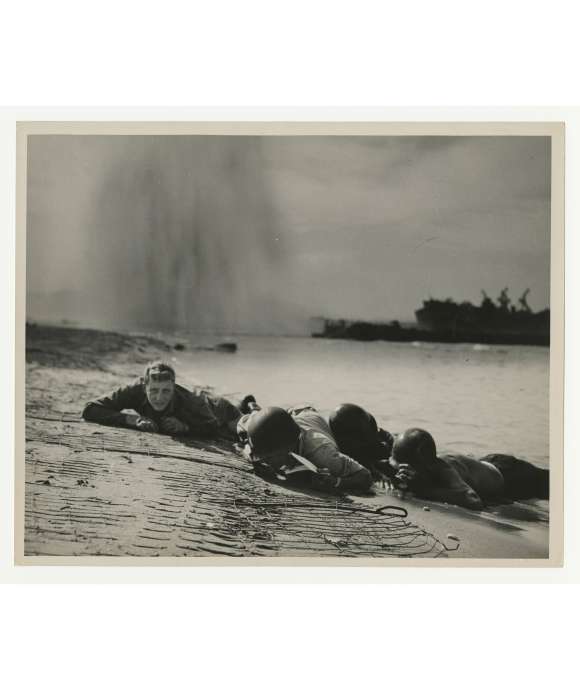
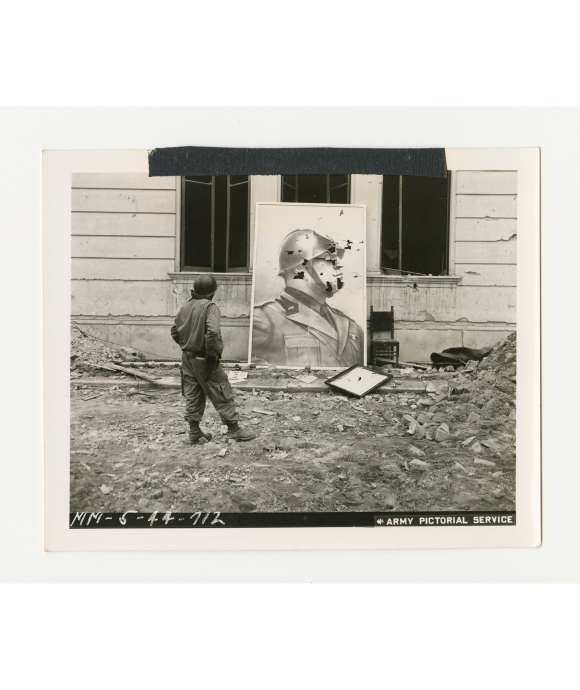
The Allied Campaign in Italy, 1943-45: A Timeline, Part Two
January 8, 1944–December 31, 1944
Jason Dawsey, PhD
Jason Dawsey, PhD, is ASU WWII Studies Consultant in the Jenny Craig Institute for the Study of War and Democracy.
Cite this article:
MLA Citation:
APA Citation:
Chicago Style Citation:
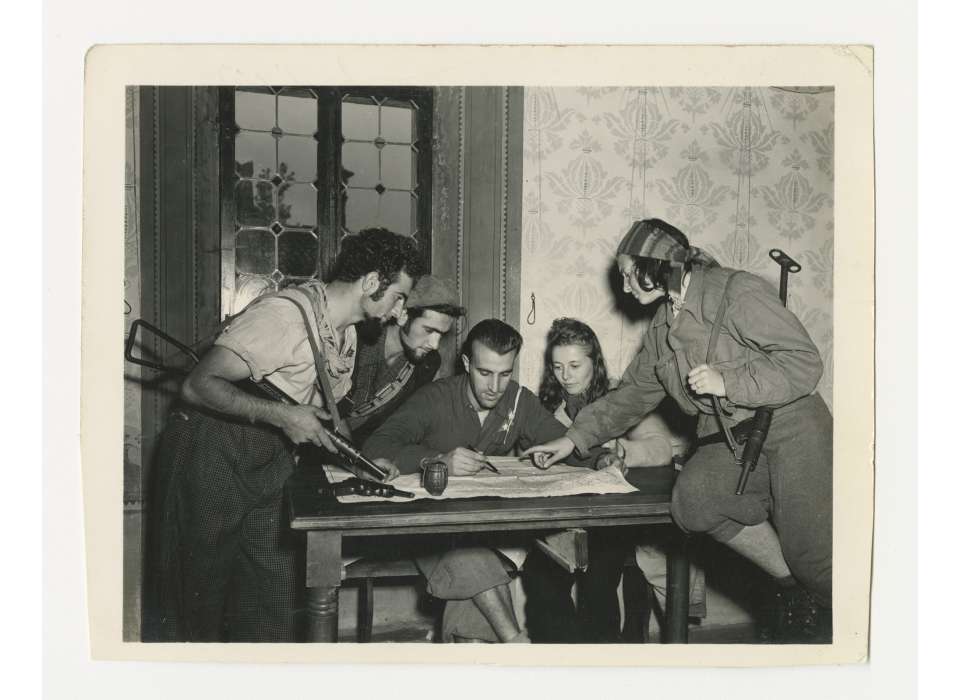




![Max Fuchs, New York City cantor, sings as Rabbi Sydney [sic] Lefkowitz, Richmond, VA, conducts the first Jewish services from Germany.](/sites/default/files/styles/max_650x650/public/2025-10/image1.jpg)



